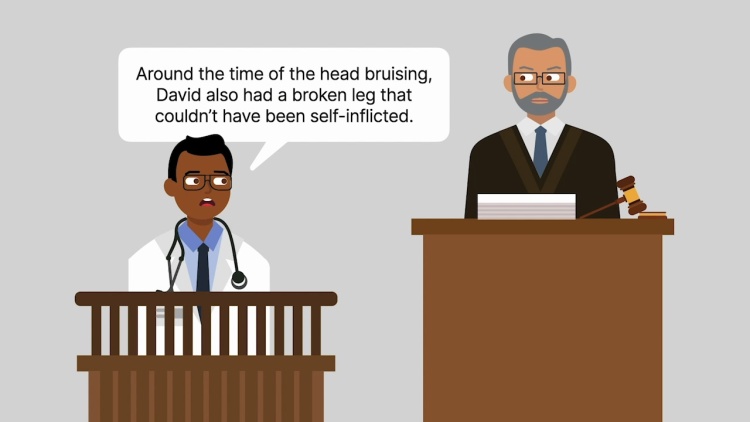People v. Weisberg
California Court of Appeal
265 Cal. App. 2d 476, 71 Cal. Rptr. 157 (1968)
- Written by Noah Lewis, JD
Facts
Muriel Rita Weisberg (Weisberg) (defendant) cared for the two children she had with her husband, Gerald Weisberg. In April 1966, Weisberg’s daughter, Sharon, was about two-and-a-half-years old. Weisberg’s son, David, was born on March 1, 1966, and died in a hospital on April 19, 1966, at seven-weeks old. An autopsy determined that massive intracranial bleeding caused by two skull fractures caused David’s death. In March 1966, Weisberg told a neighbor, Mrs. Slocum, that a bruise on David’s head was caused by his hitting his head on his crib. Mrs. Banker observed David with a severe bruise on his eye, forehead, and head that was black and blue and swollen with red splotches. Weisberg told Banker, Gerald, and Officer Elliott that David injured himself by striking his head against the side of the crib. Sharon had a broken leg. Weisberg told Slocum, Banker, and Turney that Sharon broke her leg by getting caught in her crib. Weisberg also told Slocum that her husband had to get a part-time job “because of that little bitch,” meaning Sharon. Weisberg told Turney that when Sharon was five months old, she had beaten her until she was red, and that another time Sharon had to go to the hospital because Weisberg had given her too much sedative. Once when Turney found Sharon lying in her own vomit, Weisberg said Sharon was just throwing a tantrum and was not going to pick her up. Drs. Gwinn and Kade, a senior deputy medical examiner who autopsied David, stated that David’s head injuries and four rib-cage fractures could not have been self-inflicted. Dr. Gwinn also noted David had received a chip-fracture in his leg three to four weeks before the skull fracture and that David could not have caused it himself, nor could Sharon have fractured her own leg. Weisberg was charged with murdering David and pleaded not guilty. In a nonjury trial, Weisberg was convicted of second-degree murder and sentenced to state prison. Weisberg appealed, asserting there was no evidence of malice.
Rule of Law
Issue
Holding and Reasoning (Fourt, J.)
What to do next…
Here's why 899,000 law students have relied on our case briefs:
- Written by law professors and practitioners, not other law students. 47,000 briefs, keyed to 994 casebooks. Top-notch customer support.
- The right amount of information, includes the facts, issues, rule of law, holding and reasoning, and any concurrences and dissents.
- Access in your classes, works on your mobile and tablet. Massive library of related video lessons and high quality multiple-choice questions.
- Easy to use, uniform format for every case brief. Written in plain English, not in legalese. Our briefs summarize and simplify; they don’t just repeat the court’s language.








